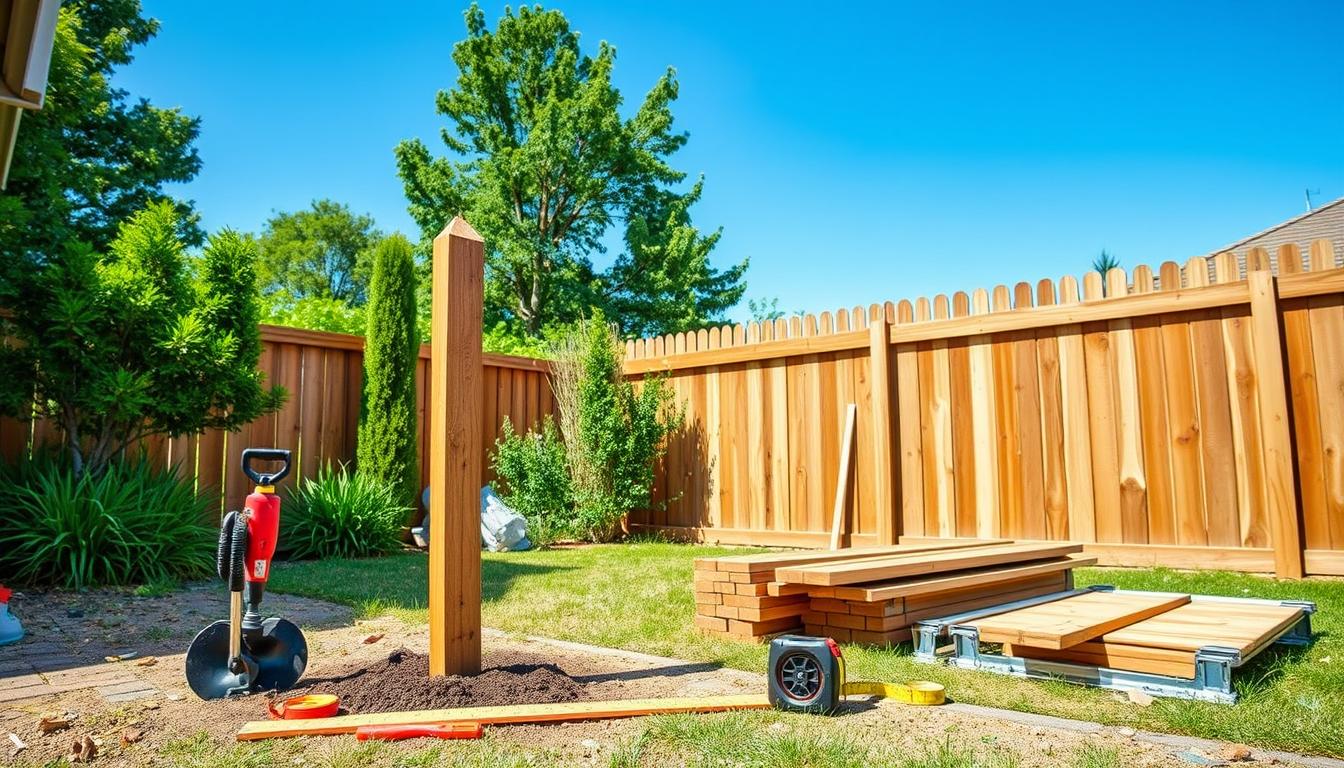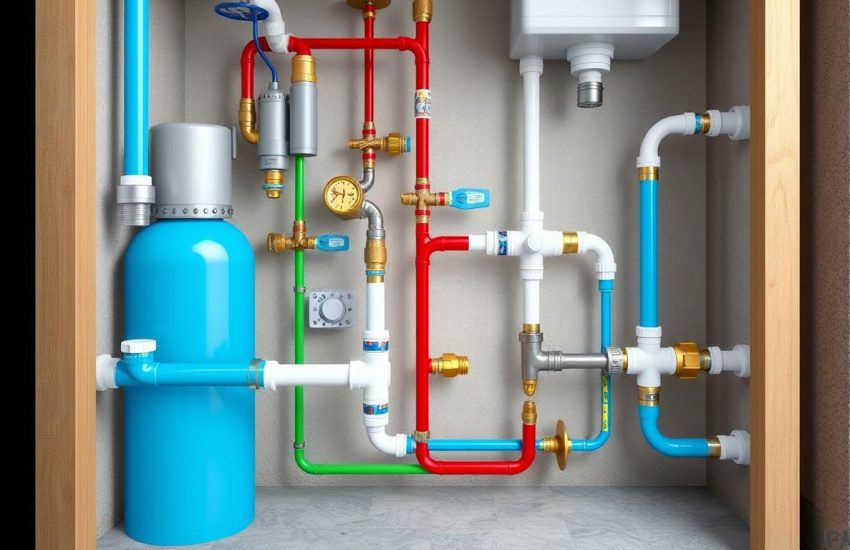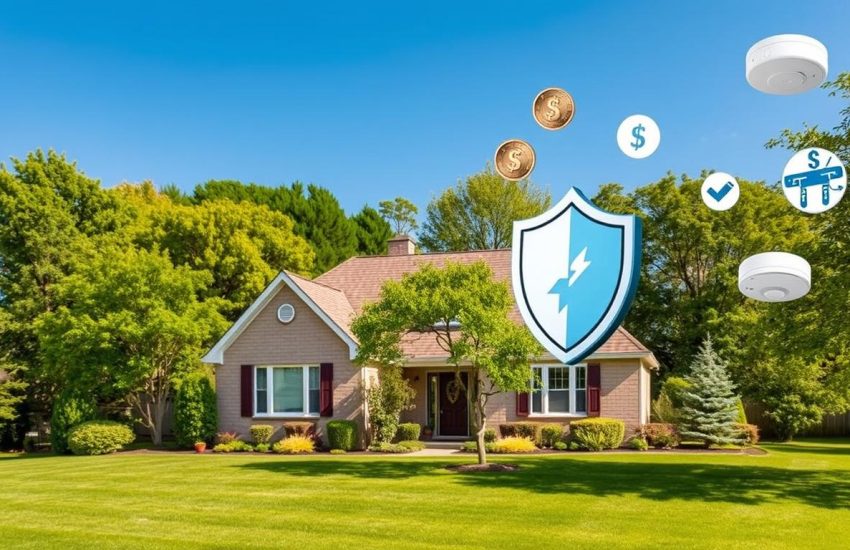Fence Installation: A Complete Guide for Homeowners
What is a silent guardian that makes your home look good and feel safe? It’s a well-picked and professionally installed fence. Home improvement lovers and wise homeowners know fence installation is more than setting limits. It’s about picking something that shows your home’s style, adds curb appeal, and boosts security.
Choosing the right fence can be tough. You have to think about privacy, pets, and following local rules. The reason you want a fence will shape its look, materials, and cost. You can choose from wood, vinyl, metal, composite, and chain-link. Each type has its benefits for homeowners. You can hire pros for perfect installation or save money by doing it yourself. Putting in a fence is a smart way to invest in your home.
The cost of a fence can change based on where you live and what materials you pick. Knowing that a 150-foot fence usually costs $4,000 to $6,000 is just the start. With smart planning and ways to save money, homeowners can feel good about their fence installation project.
Key Takeaways
- Understand the dual purpose of fences in enhancing both aesthetics and security of a home.
- Compliance with local regulations is crucial for a smooth and legal fence installation process.
- Be informed about the various materials and their costs to budget effectively for your fence installation.
- A professional installation can offer speed and expertise, but DIY may be a viable cost-saving method with the right skills.
- Maintenance and durability vary by material, with some options offering more than 20 years of service with proper care.
- Regional cost differences reflect the complexity and resources required for fence installation or upgrades.
- Choosing the right materials and installation approach is essential for long-term satisfaction with your fence.
Why Focus on Fence Installation?
Fences do a lot from making your home safe to making it look good. So, many people are looking for affordable ways to put up fences. A big jump in fence installation inquiries, 166% more, shows many want privacy and to make their homes look better.
The fence industry is now using no-contact installation to keep homeowners safe. This pandemic change helps meet the demand for better outdoor spaces. Fences not only improve security. They also make a home look better and define property lines. This creates peaceful outdoor areas.
Homes with good fences tend to sell for more. This shows fences really add value to a home. With wood prices going up, people are choosing materials like PVC. This is because it’s cheaper and lasts a long time.
Here’s why affordable fence installation is good for both practical needs and making your home look nice:
- Security: Using strong materials like metal or vinyl can keep intruders away. This makes your home safer.
- Privacy: Fences like tall wood boards or thick plants keep nosy people from looking in. This gives you a peaceful space outside.
- Cost-efficiency: Picking the right materials can save you a lot of money. It also makes your home look more inviting.
Why should you go with experts? Companies with lots of experience, like All Over Fence in Northern Utah, offer not just installation. They also guide you in keeping your fence looking good and working well over time.
Choosing a top-quality fence gives so many benefits. It makes your home look nicer, offers more privacy, improves security, and can even raise your home’s value. For homeowners wanting to upgrade their space well and save money, it’s a smart move.
DIY vs Professional Help
Homeowners have a big choice when installing a fence. They can do it themselves or hire pros. Each choice has good points and tough parts. It affects the money spent and how well it turns out.
DIY fence installation can look good because it might save money on fence installation. This is mostly in what you’d pay people to do the work. But, it takes a lot of time, tools, and knowing how. People who want to DIY should think if they have the needed skills and tools. Tools like post hole diggers, saws, and drills are important. They should also think about other costs like permits and throwing stuff away.
Professional fence installation has clear pluses. Pros know a lot about materials and how to build well. They have enough people to do the job quickly. This matters a lot for big projects or using special materials like iron. Special skills are needed for these.
| Aspect | DIY Installation | Professional Installation |
|---|---|---|
| Cost | Potential savings on labor, higher upfront equipment costs | Higher initial cost, but savings on tools and materials mismanagement |
| Time | Varies based on individual capability | Often completed faster with experienced crews |
| Quality | Depends on personal expertise | Consistently high, with warranties and follow-up services |
| Resources | Reliance on self-learning via online resources and tutorials | Professional advice and access to top materials and techniques |
To really save money on fence installation, think well about these points. DIY could work if you’re skilled and have the tools. But, for long-lasting quality and pro finishes, hiring pros is often better. If unsure, talk to a trusted installer to learn more about each choice and its costs.
How to Save Money on Fence Installation
Want to save money on fence installation and make smart choices? It’s key to know the costs and options. This helps you choose well for your budget and home looks.
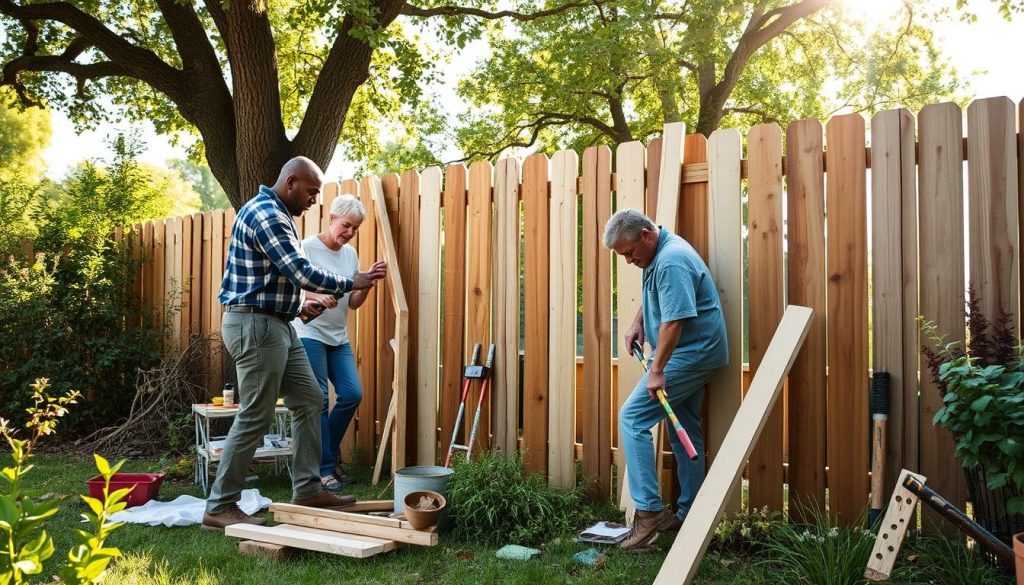
The choice of material is big. Wood looks classic but costs $2,400 to $3,200 to put up. Doing it yourself drops the cost to between $1,000 and $1,300.
Always treat wooden fences with sealant to double their lifespan, adding sustainability to your investment.
Chain link fences are cheaper and tough. They cost $2 to $3 per foot. They’re good because they’re low-cost, strong, and easy to take care of.
- DIY installation helps save on labor costs, a big part of the expense.
- Rent tools like an auger for efficient post installation, finishing in less than two weeks.
- Check local rules for fence height and materials to avoid fines.
Picking the right time to build can also save money. Build during the off-season to get lower prices.
| Material | Average Cost (Installation) | Average Cost (DIY) | Longevity & Maintenance |
|---|---|---|---|
| Wood | $2,400 – $3,200 | $1,000 – $1,300 | High maintenance, Requires sealant |
| Chain Link | $2 – $3 per foot | N/A | Low maintenance, Durable |
| Vinyl | Higher initial cost | N/A | Low maintenance, Flexible |
More cost-saving strategies include removing an old fence yourself. Also, reusing posts can save money. Getting your own permits can lower costs too.
In the end, picking materials wisely, building at the best time, and DIY work can save money on fence installation. Choose what’s best for your wallet and your fence’s future.
Step-by-Step Upgrades
Starting a DIY fence project can make your home look better. You must plan well from the beginning to the end. This ensures a beautiful and strong fence that fits your home and garden.
Talking with neighbors and your HOA is the first step. About 30% of fence projects are done together. So, it’s important to agree on the style and the costs.
Choosing the right material is key. Wood is popular, but iron fences are also liked by about 20% of people. Every material looks different and needs different care. Pick one that suits your home and is easy for you to maintain.
Knowing where your land ends is very important. This stops any problems with neighbors. About 15% of fences are built close to these lines. Measuring well means you improve your land without taking others’ space.
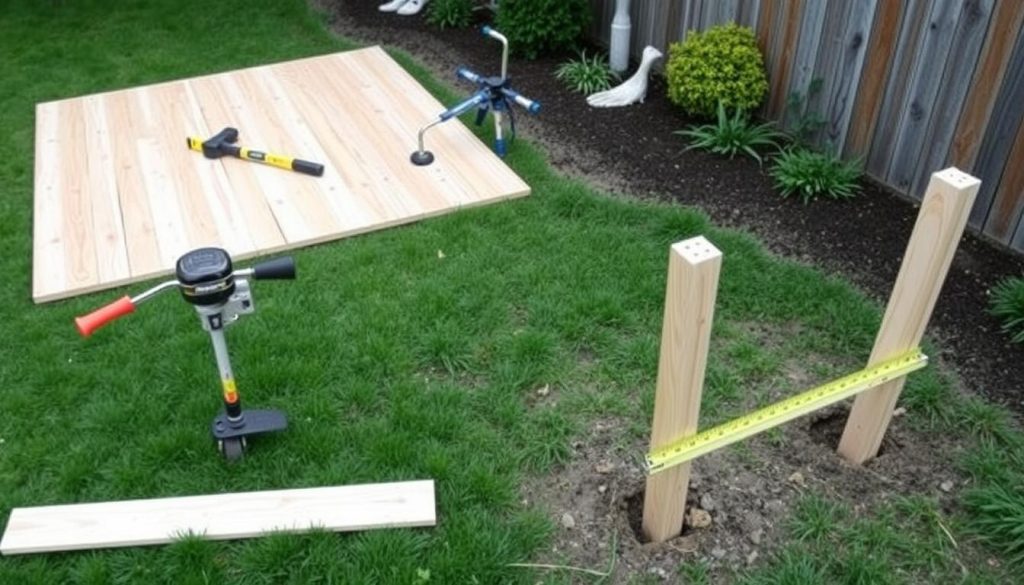
- Planning: Start by having local utility companies check for underground lines. Then mark your land. Make sure your fence follows local rules.
- Excavation and Setting Posts: Dig holes for the fence posts 6 to 8 feet apart. The holes must be deep, going below the frost line to stop shifting.
- Attaching Rails and Panels: Rails should join together at the posts for strength and be straight. Make sure panels or pickets are at the same level using a string or guide.
- Finishing Touches: Seal, paint, or stain to protect your fence. Adding things like decorative caps or lights makes it look better and work better.
This method covers all you need, from planning to final touches, for a good DIY project. For step-by-step help, check out this comprehensive resource.
Every step you take makes your home more secure and more appealing. This makes your effort and time a good investment.
Final Tips for Success
Starting a successful home improvement project, like putting up a fence, needs careful planning. The balance of safety and accuracy is very important when it comes to DIY fence installation tips. Think about many things: local rules, safety, what materials to use, and how to keep it looking good.
Before you begin, call 811. It’s not just good advice, it’s the law to Call Before You Dig. This call keeps you safe from injuries and stops service issues and fines. After making sure it’s safe, wear your safety gear. This includes gloves and goggles. The right tools and safety gear prevent accidents. This keeps both you and your project safe for a long time. After putting the fence up, check it often. Use sealants or stains for wood fences, or wash vinyl ones. This helps your fence last longer and keeps your yard looking nice.
When it comes to materials, there are many options. From vinyl fences that are good against weather to strong and pretty aluminum fences. Each type has its own benefits. For ease and quiet, Vinyl Fence is a good choice. It’s easy to take care of and doesn’t let much noise through. Think about the land and any issues when you plan where to put your fence. Getting help from a surveyor to know exactly where your property ends is very smart. This prevents problems with neighbors. Also, make sure you follow all local rules to finish your project right.
As you add the final touches, think about how the fence will look with your yard and how long materials last. A good fence should not just stand up; it should be noticeable. Whether you hire someone or do it yourself, pay attention to these tips. This makes sure your fence project is a success.

